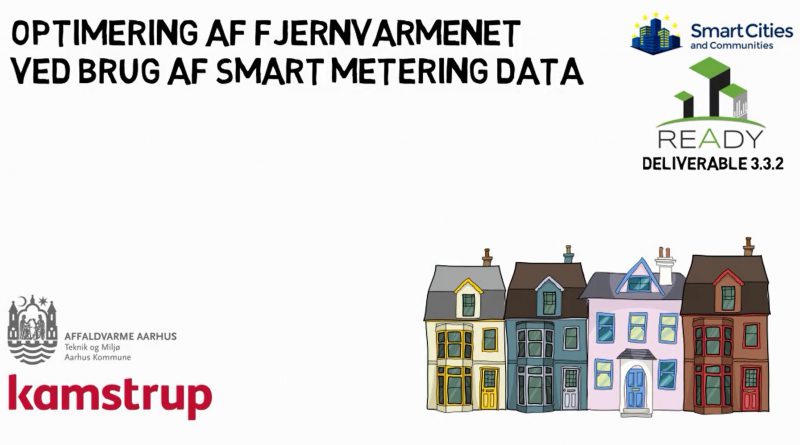Optimised district heating network operation based on smart metering data
Smart data can provide insights that allow more optimal management of the district heating
network system and permit implementation of low temperature district heating solutions.
Our initial comparison of the traditional measurements and the smart measurements (i.e. more
measuring points, higher resolution) shows that benefits can indeed be achieved by strategical
exploitation of this information. Data on the state of the distribution network and the
consumer consumption pattern can give valuable insights for day-to-day optimisation of
supply as well as improvement of the system and development of new business solutions
suied to promote low temperature district heating and sustainable development. Traditional
hydraulic models such as TERMIS used by distrct heating companies can be calibrated,
supplemented, or even expanded.
Specific examples of how to apply smart metering data to provide useful information have
been identified and are presented in more detail in 7 VideoScribe films. This series of films
shows examples of smart metering data with a time resolution of one measurement per 5
second. This resolution is sufficient to capture the dynamics of supply and consumption.
Based on our initial work, we conclude the following:
- Smart metering data can make consumers more aware of the effect of their behaviour
on the consumption and can be used for automatic regulation of heat consumption. - Smart metering data enables development of new, dynamic and flexible business
models. - Smart metering data makes it possible to monitor the state of the existing district
heating network in real time. This is highly valuable for the operation the network. For
example, it is possible to identify, where an effort to reduce heat loss has the highest
value. - Smart metering data enables efficient and robust choices in the designing of new
district heating networks.
Once actual data from our demonstration area (DK4) has been collected and analysed using
existing and new tools (WP5) it will be possible to provide recommendations concerning
modeling and data quality, aimed at district heating companies and producers of metering
equipment.
See videos (Danish speach):
| Introduction to the series on smart metering |
2. Single compenents in a home |
| 3. Behaviour in a home |
4. Consumption and cooling |
| 5. Time in the system |
6. The branch pipe |
| 7. Value creation |
Want to know more?
Delivery no D.3.3.2 Documentation of model development for optimised DH network operation based on smart metering data
Please contact: Mr. Steen Schelle Jensen, Kamstrup, ssj@kamstrup.com

